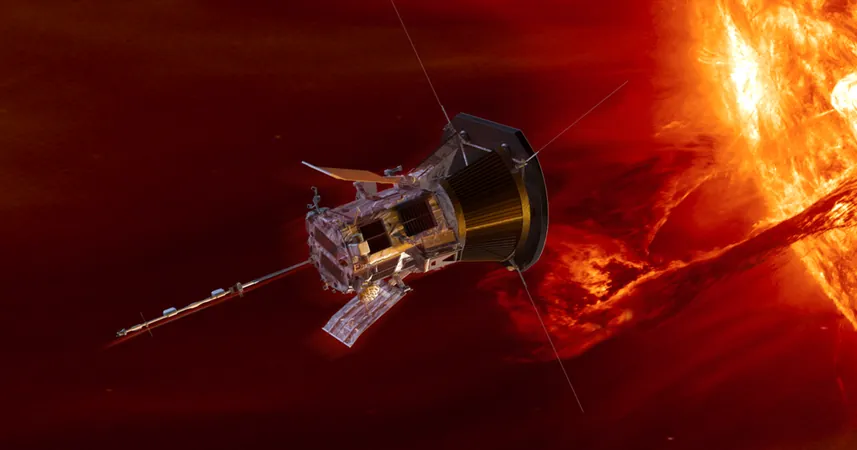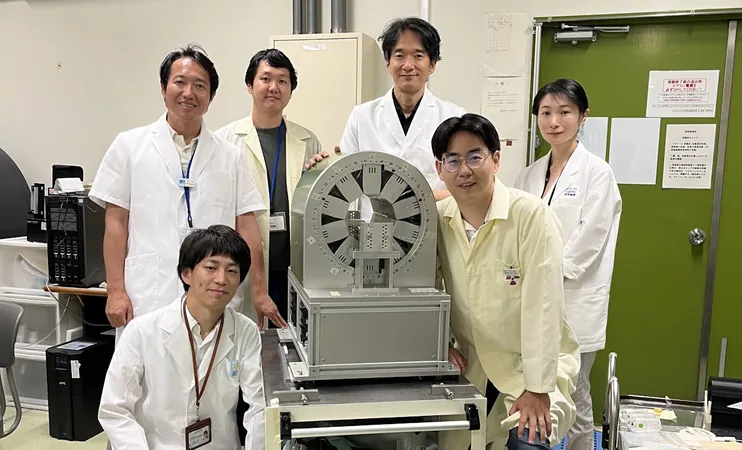
Parker Solar Probe: Unveiling the Secrets of the Sun
2024-12-30
Author: Arjun
Introduction
In a groundbreaking achievement, NASA's Parker Solar Probe has made history by getting closer to the sun than any human-made object before. Launched in 2018, this remarkable spacecraft is set on a mission to unlock the mysteries of our solar system's fiery star. Nour Rawafi, the project scientist for the Parker Solar Probe, explained that the goal is to study the sun's behavior and its impact on space weather, including phenomena like solar flares and coronal mass ejections that can affect life on Earth.
The Importance of Understanding Solar Events
The sun, a dynamic and magnetized star, is constantly producing powerful explosions that can influence our environment. Understanding these solar events is crucial for safeguarding space equipment, such as satellites and astronaut missions. "To live in harmony with our star, we need to understand how it works," said Rawafi, emphasizing the significance of predicting solar activity to mitigate its potential effects.
Engineering Marvel of the Parker Solar Probe
The Parker Solar Probe stands out not just for its accomplishments but for the engineering marvel that keeps it operational despite extreme heat. The probe's heat shield, crafted from a specialized carbon foam, allows the spacecraft to withstand temperatures soaring between 1,800 and 1,900 degrees Fahrenheit while keeping its instruments at nearly room temperature—a true testament to human ingenuity.
Journey to the Sun and Communication Challenges
Rawafi noted that the journey to this close encounter with the sun has not been easy. NASA has been contemplating missions like the Parker Solar Probe since 1958, but technological limitations delayed progress for decades. It wasn't until advancements in materials research in the early 2000s that the team could develop a heat shield capable of enduring the intense solar heat.
Communication with the Probe
In an unprecedented event, the team initially lost contact with the Parker Solar Probe just before its closest approach to the sun. They held their breath for several days until they finally received confirmation that everything was functioning properly. The moment the probe emerged safely and sent back multiple signals of reassurance was a mix of relief and excitement for the mission team.
Anticipated Scientific Data
Looking ahead, Rawafi revealed that the first batch of scientific data is expected to be transmitted back to Earth in January. This will be a significant milestone, opening up new possibilities for understanding solar science. Every three months, as the Parker Solar Probe completes its orbits, a fresh load of data will be made available, giving scientists the chance to uncover insights that could revolutionize our understanding of not just our sun, but the potential for life across the universe.
Conclusion
As we stand on the brink of new solar revelations, the Parker Solar Probe is positioned to deliver the gift of knowledge this coming January, just in time for the new year. This mission could very well change the way we understand the solar phenomena that shapes our existence on Earth. Stay tuned as we anticipate the groundbreaking discoveries that lie ahead!


 Brasil (PT)
Brasil (PT)
 Canada (EN)
Canada (EN)
 Chile (ES)
Chile (ES)
 Česko (CS)
Česko (CS)
 대한민국 (KO)
대한민국 (KO)
 España (ES)
España (ES)
 France (FR)
France (FR)
 Hong Kong (EN)
Hong Kong (EN)
 Italia (IT)
Italia (IT)
 日本 (JA)
日本 (JA)
 Magyarország (HU)
Magyarország (HU)
 Norge (NO)
Norge (NO)
 Polska (PL)
Polska (PL)
 Schweiz (DE)
Schweiz (DE)
 Singapore (EN)
Singapore (EN)
 Sverige (SV)
Sverige (SV)
 Suomi (FI)
Suomi (FI)
 Türkiye (TR)
Türkiye (TR)
 الإمارات العربية المتحدة (AR)
الإمارات العربية المتحدة (AR)